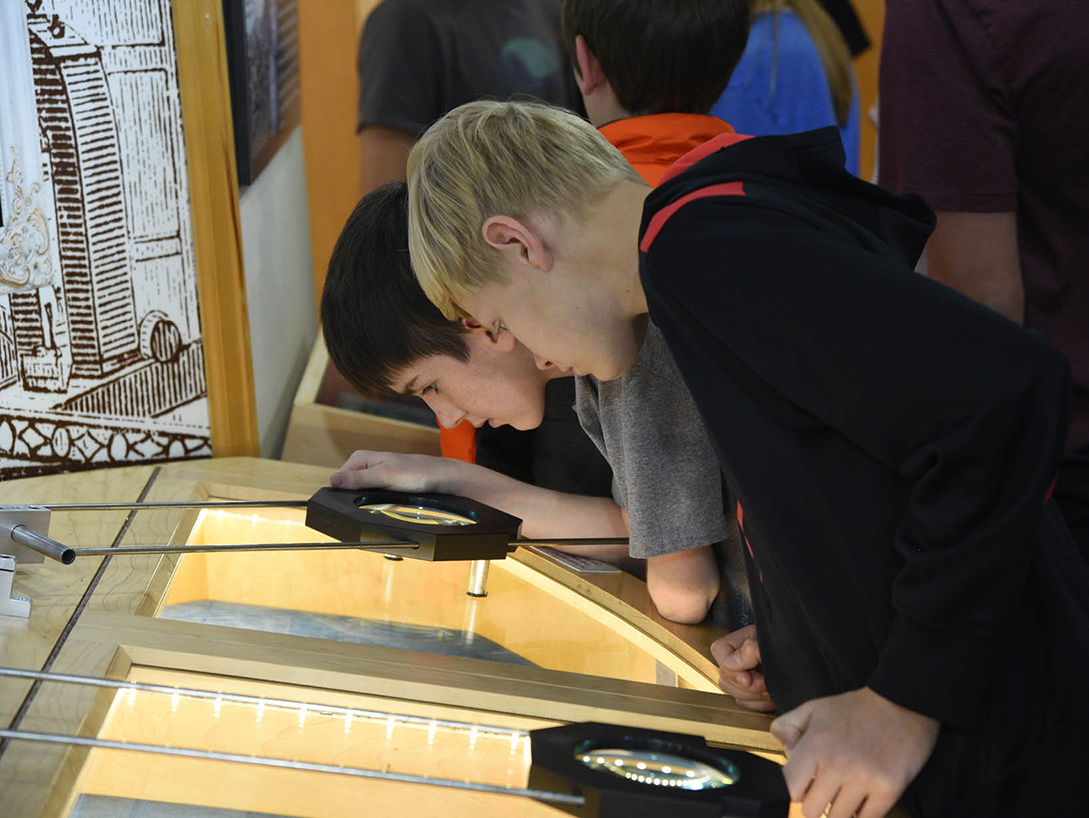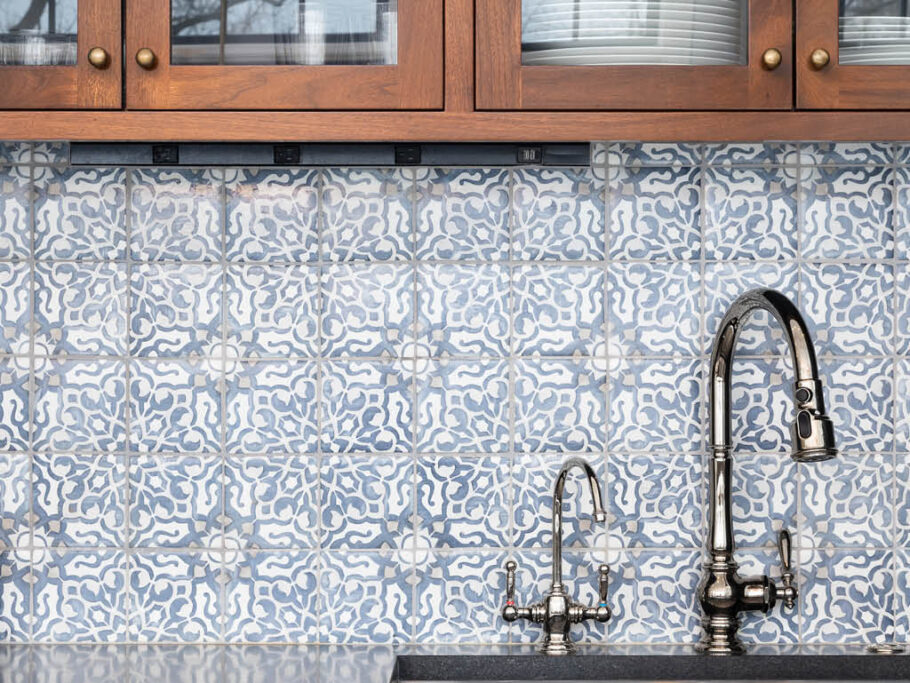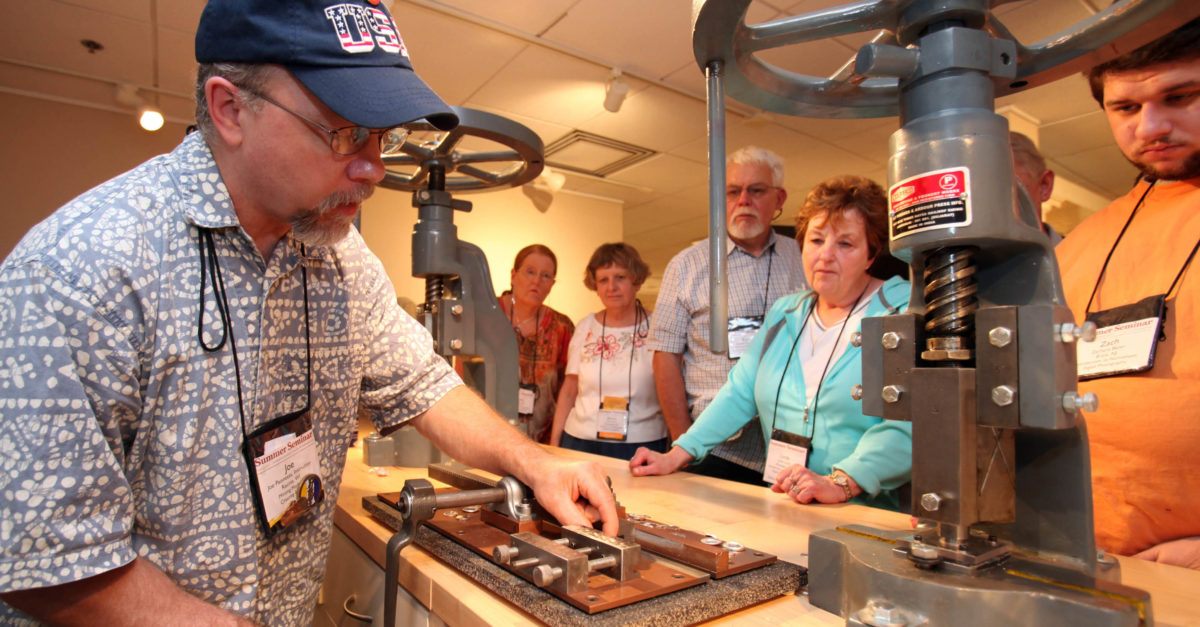Coining a Craze
When I turned twenty-one, my father gifted me twenty-one silver dollars, which his father had given to him when he was the same age. Most are from the early 1900s, and one is even from the late 1800s.
What I found immediately interesting about them was they were so different from modern silver dollars: larger, heavier, and with different markings. And these coins are certainly worn, each one telling a decades-old tale of where it has been. Whenever I hold them, I feel like I am holding history—both my family’s and America’s—in my hands.
That’s the magic of numismatics, the study and collection of coins, medals, tokens, and paper money. And the world’s hub for enthusiasts, collectors, and educators alike is the American Numismatic Association (ANA) in Colorado Springs, Colorado. Founded by Dr. George F. Heath and a handful of fellow coin enthusiasts in 1891, the ANA has since grown to more than 28,000 members (including 1,200 abroad), and its headquarters houses both the world’s largest numismatic lending library and the world’s largest museum dedicated to numismatics. It’s here where the true measure of money comes to life.
THE MEANING BEHIND MONEY
“Money carries a world of information within it,” says Kim Kiick, the ANA’s executive director. “Since money is produced by an issuing authority, usually a government, there are the obvious economic and historical aspects related to how that item came to be. The design of money is purposeful and often commemorates individuals, groups, or events. And every single circulating monetary unit has something that makes it distinctive.”
Photography by Rob Kelley/American Numismatic Association

Today, this goes beyond traditional money. There’s also a category of numismatics called exonumia, which includes items related to money, such as medals, military scrip, casino chips, gift cards, credit and debit cards, and even “elongates”—those oval-shaped pieces of flattened cents kids collect. If you have it in your wallet, it’s likely part of the numismatic world.
This is just the latest step in human history for currency, according to Kiick. “Money in one form or another has been around at least six thousand years—ever since people began devising a commodity system assigning relative value to exchanged commodities, such as how much a bushel of wheat is worth compared to a copper ax,” she says. “It has also been the first point of contact between societies throughout history. Even today, one of the first impressions people have of another country is from their money, which tells us about its art, history, values, and even politics.” Hence the ANA’s long-time acronym, CASH: culture, art, science, and history.
AN EMPHASIS ON EDUCATION
These broad categories help explain what makes money such a fascinating subject to study—and why the ANA intentionally reaches out to young people. For example, it offers a young numismatist (or YN) membership, complete with its own monthly newsletter and programs like Coins for A’s, which rewards school-age kids with a free collectible coin every marking period for good grades. It also sponsors free bus transportation and field trips for Colorado Springs-area schools to help inspire an interest in coin collecting.
In addition, the ANA hosts an annual Summer Seminar, a two-week program of numismatic learning and camaraderie that offers various classes to collectors of all ages, as well as scholarships to young numismatists. The instructors volunteer their time for a chance to share their love of their field.
“Those two weeks are filled with community, and participants are creating such wonderful friendships,” Kiick reveals. “And several attendees grew up to become extremely successful, either in numismatics or in their own careers. It’s special to see how that time here has affected their lives, both socially and professionally.”
SHOW THEM THE MONEY!
Of course, the most popular destination here is the Edward C. Rochette Money Museum, where one can feel like a kid in a candy (coin) store. In addition to having hundreds of coins on display from around the world and throughout history—almost all of which have been donated—the main museum area houses fun items like a full-scale minting machine, a balancing scale, and misprinted paper money.
Photography by Rob Kelley/American Numismatic Association

In the lower level, you’ll find the History of Money exhibit, where you can see some of the earliest forms of currency and learn how money from across the globe has changed from ancient times to today. In addition, you’ll find a pair of popular attractions: the Kids Zone and Mini-Mint. At Kids Zone, children twelve and under enjoy money-related activities and exhibits. And the Mini-Mint is just as the name indicates: you’ll witness the process of how coins were made by hand centuries ago, including how they’re struck to add all the intricate details.
However, perhaps the most jaw-dropping items in the Money Museum are found in the Harry W. Bass, Jr. Gallery, a collection of unique gold coins and patterns (designs that were never put into production). Other rare coins housed at the Money Museum include the 1804 silver dollar and the 1913 Liberty Head nickel—both valued in the millions—as well as the 1792 half disme, a precursor to the dime and the first American coin ever struck.
COIN-COLLECTING PARADISE
If you can’t make it to Colorado Springs, the ANA holds two national conventions each year to provide collectors, professional numismatists, exhibitors, and the public an opportunity to participate. The National Money Show® is held in the spring and displays millions of dollars’ worth of coins, plus seminars and auctions.
Then there’s the World’s Fair of Money®, the biggest coin-collecting event of the year—it’s the numismatic equivalent of Comic-Con. Collectors can see historic treasures from the Edward C. Rochette Money Museum vault and from private collections. Live auctions at the event have even resulted in multimillion-dollar bids on some rare items.
Photography by Rob Kelley/American Numismatic Association

Collectors also have an opportunity to attend educational seminars, lectures, and social events, network with fellow hobbyists, and even meet numismatic celebrities. For example, Pawn Stars’ Rick Harrison has attended several events, and Eunice Kennedy Shriver was a special guest decades ago. However, attendees are equally interested in money-centric figures, such as the director of the U.S. Mint and the Secretary of the Treasury.
But Kiick says the biggest draw of the show is the bourse, a huge trading floor with hundreds of dealers from across the country buying and selling every numismatic item imaginable. The U.S. Mint, the Bureau of Engraving and Printing, and many world mints are usually in attendance, all offering their latest coins and commemoratives for sale. Attendees also can bring their old coins and paper money to the show for grading services and free evaluations.
A NEW NUMISMATIC MISSION
If all this sounds amazing, you can always become an ANA member. The perks are many: free access to the museum, the ANA’s monthly magazine, The Numismatist, and materials from the Dwight N. Manley Numismatic Library, plus opportunities to participate in conventions, seminars, and workshops. However, Kiick says that most collectors join the ANA simply to belong to a community of people who share a common passion. “Even through the coronavirus ‘stay-at-home’ situation in 2020, collectors remained highly engaged through our digital media, online blogs, and forums,” she shares.
“That’s going to be our next big push: growing more in virtual education,” she concludes. “Up to now, the study of money has been largely about holding it in your hand: looking at it and drawing it close to see the details. But we hope that our virtual outreach during the pandemic helps to grow our international member base. Because of distance, international numismatists haven’t had the same experience as those in the States. But with these virtual elements, we can now connect people across the globe and across the country for one purpose—to share their love of numismatics.”
For more info, visit money.org






















